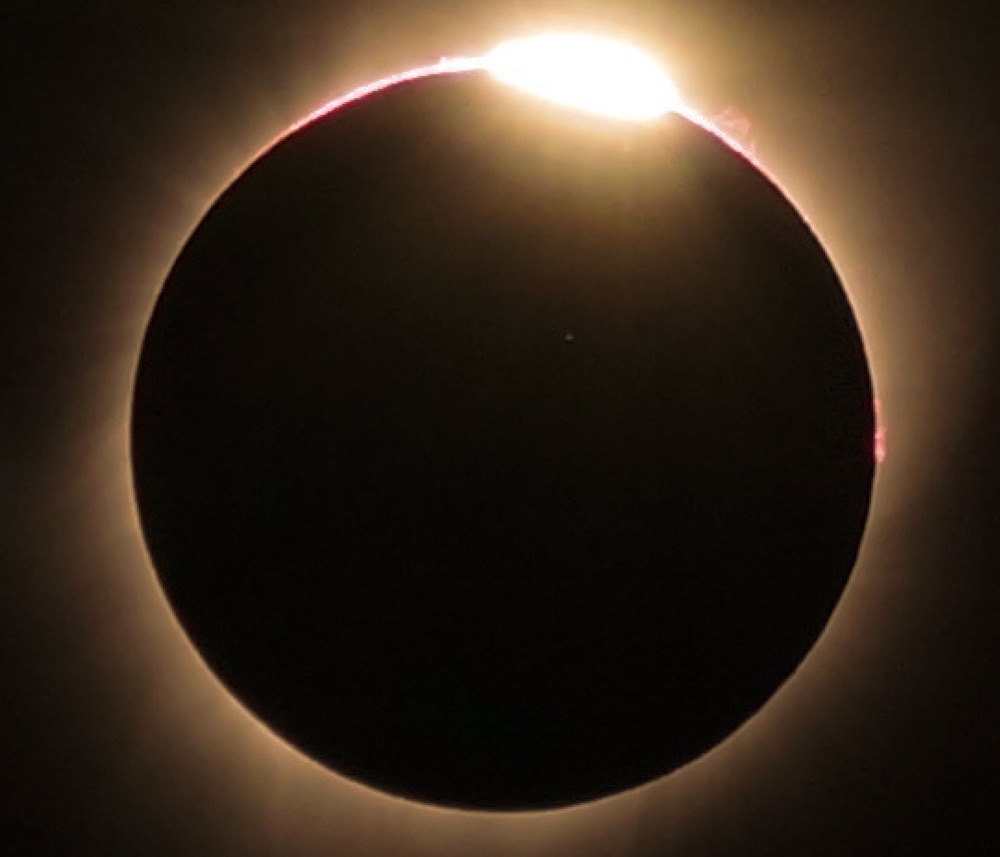Great American Solar Eclipse Viewership Dwarfed Super Bowl Audience
Comparing the Great American Solar Eclipse to the Super Bowl doesn't do justice to the amazing interest in last month's sky show, a new study reveals.
About 215 million American adults — 88 percent of the adult population — watched the Aug. 21 total solar eclipse in some fashion, according to the study.
That's nearly twice the viewership of the most recent Super Bowl. (According to Nielsen, 111 million TV viewers tuned in to the Feb. 5 game, in which the New England Patriots overcame a 25-point deficit to beat the Atlanta Falcons.) [Here Are the Most Amazing Photos of the 2017 Total Solar Eclipse]
"This level of public interest and engagement with a science-oriented event is unparalleled," study author Jon Miller, director of the International Center for the Advancement of Scientific Literacy at the University of Michigan's Institute for Social Research, said in a statement.

The study, a joint effort of the University of Michigan and NASA, is based on surveys — performed in early 2017 and then again just after the Aug. 21 eclipse — of more than 2,000 American adults.
Extrapolating from the survey results, Miller determined that 154 million American adults observed the event directly, using eclipse glasses, pinhole viewers or other gear. Of these, about 20 million traveled somewhere to get a better view. (Totality was visible from a strip of land just 70 miles, or 113 kilometers, wide.)
Another 61 million watched the eclipse indirectly — on TV, for example, or on computers or smartphones.
Get the Space.com Newsletter
Breaking space news, the latest updates on rocket launches, skywatching events and more!
The new study also indicates that people were not disappointed by the celestial event: On a scale of 0 to 10, survey participants gave the eclipse average scores of 7.6 and 7.0 for being enjoyable and educational, respectively.
You can read the study for free here: https://www.isr.umich.edu/cps/initialeclipseviewingreport.pdf
Miller and his team plan to survey the participants one more time, in October and November, and publish a final report based on all of the data in January 2018.
Many different people and organizations worked to raise awareness of, and generate interest in, the Aug. 21 eclipse — the first total solar eclipse visible from the U.S. mainland since 1979, and the first one to cross the nation coast to coast since 1918.
NASA, which provided multiple free webcasts of the event, the U.S. National Science Foundation (NSF) and the nonprofit American Astronomical Society were among some of the most prominent and active organizations covering the eclipse. (NASA got more than 90 million page views on Aug. 21, shattering its web-traffic record by a factor of seven.)
Public libraries across the country also participated, handing out a total of 2.1 million free pairs of eclipse glasses via a project conceived by astronomers Andrew Fraknoi, Dennis Schatz and Douglas Duncan and directed by Paul Dusenbery, head of the of the Space Science Institute’s National Center for Interactive Learning in Boulder, Colorado.
"This was a great opportunity for libraries and their communities to work together to participate in a celestial event of this scope," Dusenbery said in a statement. "Many organizations like NASA, NSF, and the American Astronomical Society helped people understand the science of eclipses and to view them safely, and we were delighted to be part of this important educational effort."
Another group, Astronomers Without Borders, is collecting eclipse glasses to give to schools in Asia and South America, so students can view solar eclipses in these regions in 2019. If you'd like to donate yours, go to http://astronomerswithoutborders.org/awb-programs/resource-sharing-programs/eclipse-glasses-donation-program.html
Follow Mike Wall on Twitter @michaeldwall and Google+. Follow us @Spacedotcom, Facebook or Google+. Originally published on Space.com.
Join our Space Forums to keep talking space on the latest missions, night sky and more! And if you have a news tip, correction or comment, let us know at: community@space.com.

Michael Wall is a Senior Space Writer with Space.com and joined the team in 2010. He primarily covers exoplanets, spaceflight and military space, but has been known to dabble in the space art beat. His book about the search for alien life, "Out There," was published on Nov. 13, 2018. Before becoming a science writer, Michael worked as a herpetologist and wildlife biologist. He has a Ph.D. in evolutionary biology from the University of Sydney, Australia, a bachelor's degree from the University of Arizona, and a graduate certificate in science writing from the University of California, Santa Cruz. To find out what his latest project is, you can follow Michael on Twitter.









